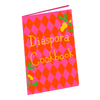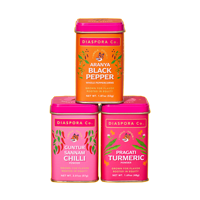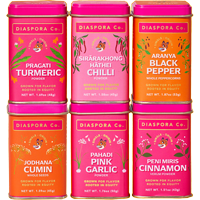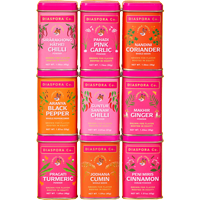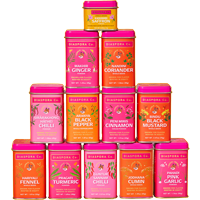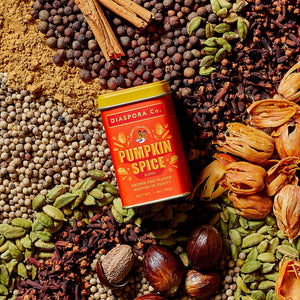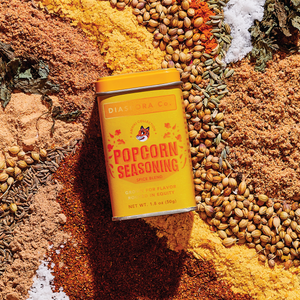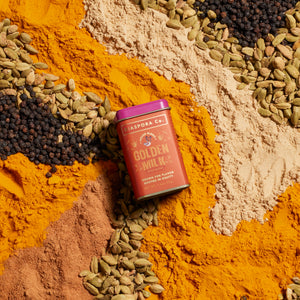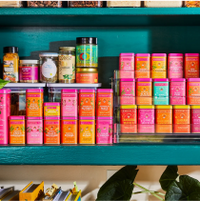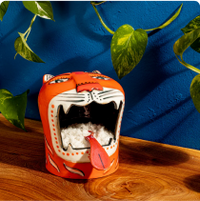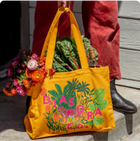It is 6.45am on a Monday morning, and I am walking down a mud trail in Kandy, Sri Lanka, taking in the forest around me. I see old trees, hundreds of feet tall, layered with creepers and frilly lichen. The ground is covered with mulch; the air thick with the scent of gently decomposing leaves. There is so much to see: butterflies, orchids, palm trees with leaves the size of a billboard hoarding. So much to hear: frogs, birds, insects, humming, thrumming, pulsating. So much abundance: jackfruit, papaya, plump bananas, cloves, pepper, and cinnamon trees. Sustenance for all residents, humans and others.
This is a Kandyan Forest Garden: a form of agroforestry that blends fruit and spice trees with native forest species. It has been practiced in this part of Sri Lanka for decades, some say centuries, and has shaped the landscape of Kandy. Walking through the forest, my hands graze feathery ferns, coarse tree bark, velvety moss, and I feel the vitality of this ecosystem.
This particular forest garden is part of Eko Land, a community initiative based in Digana, Kandy, from where we source our cinnamon. It is run by the Elegalla family, and sits on forest land that has been passed on from generation to generation, until its current owner, Nihal, took over in the early 90s. Nihal now co-manages the property with his son, Remon, and local staff that live around Digana.
Eko Land started in the pandemic, to bring economic opportunities to the region. They source cinnamon from various small holder farmers in the Kandy region, which they process into shards, quills, and our signature Peni Miris Cinnamon powder. We also source our sensational Kandyan Cloves from Eko Land, but it is the cinnamon that brings me here today.
Cinnamomum Verum, aka True Cinnamon, is native to the island country of Sri Lanka, where it has grown wild in the central highlands for centuries. More recently, owing to its value, cinnamon has been planted more intentionally by farmers in the region, and many homes have a few trees in their backyard, for household use and to sell commercially.
The cinnamonIt is harvested from the inner bark of trees ranging from 5 to about 30 years of maturity, and involves tremendous skill. ItsThe flavour of the cinnamon varies according to the age of the tree. Younger trees have a sweeter flavour profile while the older trees have a more spicy tasting notes. Our Peni -Miris cinnamon powder is a mix of both, which is also where its names come from. In Sinhala, Peni = honey, and Miris = hot.
I observe these intricacies of harvest on a field trip, with Jayanthe Aberathna, a member of the Eko Land team, and Nilantha, a second-generation cinnamon harvester from Kandy. Nilantha’s training started at the age of five, when he began climbing trees, and eventually, accompanying his father on harvest trips. Today, he is a seasoned harvester with a network of farms across the Kandy region. From him, I learn the logistical challenges of harvesting cinnamon: The trees are often several kilometres from a motorable road, so all equipment needs to be manually carried to the site and back, requiring a sizable crew of people.
Jayenthe stops the jeep at a small turn-off in the road, and we alight, spray our boots with Dettol to keep the leeches at bay, and begin our hike to the farm, two kilometres away. More beautiful views follow: of gurgling streams, rice paddy fields, a rock pool dotted with purple lilies, until we arrive at a modest dwelling, surrounded by banana, papaya, turmeric, and ginger.
This is the farm of Dharmarathna, slightly overgrown but abundant nonetheless. As we walk, the canopy becomes more dense, with a mix of spice and forest trees: Clove, nutmeg, and cinnamon, with an understory of coffee. Another Kandyan Forest Garden, albeit much younger in maturity than the one at Eko Land.
Nilantha uses his machete to hack at the undergrowth, and I obstacle-course my way behind him, scrambling over rock, and ducking beneath forest vines, occasionally stopping to pick off the leeches that have made their way on my person. I notice one has latched on to my calf, consider flicking it away, and decide otherwise. I guess it's only fair that I contribute some nutrition to the ecosystem.
Nilantha stops at a cinnamon tree, and I watch as he begins the process of “tasting the tree”.
First, he peels away the outer bark of the tree using his knife, leaving the pale inner bark exposed. Next, he taps the tree with the handle of his knife, and then expertly slides the blade under the inner bark to separate it from the wood. In his hand, is a piece of wet cinnamon bark, about three fingers thick, and already, I can smell the cinnamon in the air. He rips off a bit, puts it in mouth, and hands me another. It is juicy, and woody at first, and then the flavours arrive: exquisitely sweet, and then, potently, invigoratingly s p i c y.
We taste a few more trees, and I learn that not all cinnamon trees have flavour! Three of the ten trees we tasted that day had minimal flavour, even though they were similar – in age and location – to the superior-tasting ones. (How curious!) Part of the harvester’s job is to sample and identify which trees to harvest, and at what time of year. Nilantha believes the trees carry less flavour when they are in fruit, and refrains from harvesting in the reproductive stage. This makes sense from a sustainability perspective too, as it gives the trees a chance to produce and disperse their seed.
In some cases, the cinnamon is harvested at the farm, and the wet bark is delivered to Eko Land for further processing. At other times, the branches of the cinnamon tree are transported, and the inner bark is harvested by the all-woman all-star team of Eko Land.
I meet these gentle powerhouses the following day, when they troop into the Eko Land office, put on their hairnets and gloves, and get to work processing everything from cinnamon and pepper, to coffee, nutmeg, and mace. They are gregarious, highly efficient, incredibly skilled, and very adorable.
It is here that I observe the process of making cinnamon quills. After the inner bark is separated from the wood, the flat cinnamon sheets are sun-dried until they curl at the corners, and take on a warm yellow-brown colour. They are then cut into strips, curled by hand into neat little cylinders, and filled with thin strips or “quillings” of cinnamon. Move too fast, and the cinnamon will split. Pick the wrong piece – too wet or too dry – and the cinnamon will split. It is gentle, meticulous work, and I wonder how many hours of practice it takes to arrive at this level of skill.
When the quills are dry, they are stored in air-tight bags, in a cool dark storeroom, redolent with the smell of cinnamon. No additives. No machinery. This is the work of the sun, the earth, the water, and the many humans who have carefully handled it along the way.
It is beautiful work, but difficult too. I learn more about this from Eko Land’s founder Nihal Elegalla, who tells me that the sourcing landscape of Sri Lanka is changing: There are fewer older cinnamon trees than there were a decade ago. Kandyan forest gardens are still plentiful but there are also more plantations, where cinnamon trees are intercropped with tea bushes. Much more cinnamon, much less biodiverse.
We discuss the uncertainties inherent in running a community venture like Eko Land, because there are so many hands involved: a network of farmers, a network of harvesters, skilled hands for processing – if any link in the chain falls through, the cinnamon is compromised. On the flip side, this is also why Eko Land has such a far-reaching impact for its community: There are many hands involved.
It is a recurring challenge for community ventures, one that I have heard from numerous farm partners over the last year. The truth is, it is exceedingly difficult to create a truly sustainable supply chain in a world that is driven by price, profit, and power. But, it is also exceedingly clear that the world needs projects like Eko lLand, centred on regenerative growing and community values. Needs its commitment to biodiversity, its incredible life-giving forests, its regenerative food growers. Now, more than ever.
With gratitude,
neha

